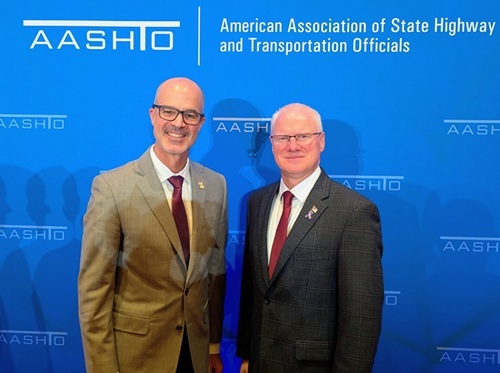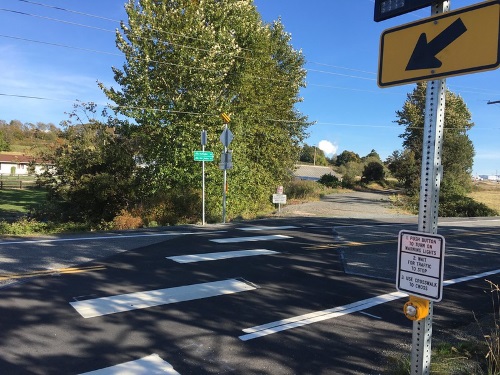The Federal Highway Administration issued new guidance and increased funding on March 30 for the Transportation Alternatives or TA Set-Aside program for state and local government projects that “create safer, more walkable streets, construct pedestrian and bicycle infrastructure, foster Safe Routes to School programs, conduct road safety assessments, as well as support other local community initiatives” according to the agency.
[Above photo by WSDOT]
Those community initiatives include historic preservation projects, vegetation management, and environmental mitigation related to storm water management and habitat connectivity, the agency said.
FHWA noted the $1.2 trillion Infrastructure Investment and Jobs Act – enacted in November 2021 – nearly doubled funding for the TA program from $850 million annually for fiscal years 2018 through 2020 to an average annual amount of $1.44 billion from 2022 through 2026.

“With this new guidance we’re announcing today, states and localities have one more tool to advance critically important projects that improve safety and accessibility for all and use a Complete Streets approach to create safe, connected, and equitable street and trail networks,” noted FHWA Deputy Administrator Stephanie Pollack in a statement.
“These projects give people more affordable options to get from Point A to Point B while also reducing emissions from the transportation sector,” she said.
FHWA said that, given the high demand for these types of projects at the local level, the program also allows states to develop a process to sub-allocate up to 100 percent of funds to counties, metropolitan planning organizations or MPOs, and regional transportation planning organizations.
The IIJA also requires states to hold a competitive grant process for local governments and other eligible entities before transferring TA set-aside funds to other federal-aid programs.
The agency added that its updated guidance also encourages states and MPOs to incorporate demographic information into their TA program applications and selection procedures as they prioritize projects to better measure transportation equity and address the needs of underserved communities.
 Top Stories
Top Stories
New AASHTO Leadership Elected at 2025 Annual Meeting
November 21, 2025 Top Stories
Top Stories

